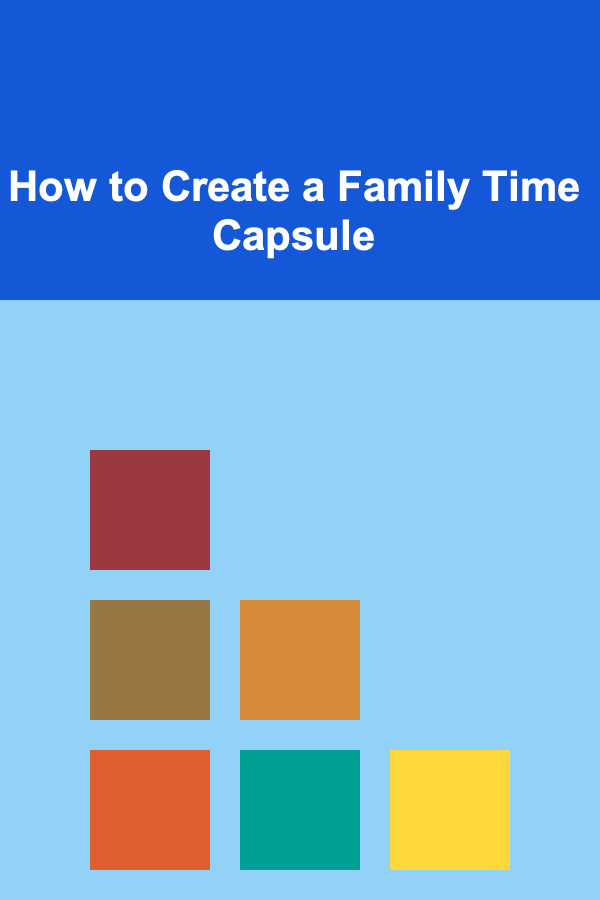
How To Capture Stunning Interviews on Video
ebook include PDF & Audio bundle (Micro Guide)
$12.99$6.99
Limited Time Offer! Order within the next:

In today's world, video content is at the forefront of communication, and interviews are one of the most powerful tools for storytelling. Whether you're capturing interviews for documentaries, news segments, or corporate presentations, the way you shoot and present these interviews can have a profound impact on how your message is received. In this article, we'll explore the nuances of capturing stunning interviews on video, from the preparation stage to the final edits. Our goal is to provide you with comprehensive, actionable tips that will help you create high-quality, compelling interview videos.
The Power of a Well-Captured Interview
Before diving into the technical aspects, let's take a moment to understand why video interviews are so impactful. Unlike written content or audio recordings, video provides a multi-dimensional experience. Viewers not only hear the answers but also see the emotions and expressions of the person being interviewed. This creates an immediate connection with the audience, making the message more relatable and authentic.
When done correctly, video interviews can engage your audience emotionally, build credibility, and deliver a clear message. However, capturing this level of engagement requires careful planning, attention to detail, and knowledge of video production techniques.
Pre-Interview Planning: Setting the Stage for Success
Understanding the Purpose
Every video interview has a specific purpose---whether it's to inform, persuade, or entertain. Before you begin filming, it's crucial to define the objective of the interview. What do you want the interviewee to convey? Are you telling a story, gathering expert insights, or sharing personal experiences? Once you've defined the purpose, your approach to filming and editing will become clearer.
Choosing the Right Interviewee
The interviewee plays a central role in the success of your video. They should be knowledgeable, articulate, and comfortable on camera. While it's essential to find someone with expertise, it's equally important that they can speak naturally and connect with your audience. Conducting a pre-interview to gauge their comfort level in front of the camera can help you understand their speaking style and personality.
Preparing the Interview Questions
Crafting thoughtful and open-ended questions is key to a successful interview. Avoid questions that can be answered with a simple "yes" or "no." Instead, ask questions that encourage deeper responses, insights, and storytelling. The more engaging your questions are, the more likely you are to capture compelling responses.
Make sure to prepare follow-up questions that allow the conversation to flow naturally. A good interview often leads to spontaneous moments, and you want to be ready to explore new directions if they arise.
Selecting the Right Location
The environment where the interview takes place can have a significant impact on the final product. Choose a location that aligns with the theme and tone of the interview. For example, an outdoor setting may work well for an interview about environmental activism, while a corporate office might be more appropriate for a business interview.
When selecting a location, consider the following:
- Lighting: Natural light is ideal, but if that's not possible, make sure to bring in adequate lighting equipment.
- Sound: Choose a quiet space with minimal distractions. Background noise can detract from the quality of the interview.
- Background: Ensure that the background is not too distracting. A clean, uncluttered backdrop allows the interviewee to remain the focal point.
Setting Up the Equipment: The Technical Side
Camera Choices
Selecting the right camera is essential for achieving professional-quality video. While high-end cinema cameras are ideal, they're often unnecessary for most interview setups. A DSLR or mirrorless camera with 4K resolution is more than enough for capturing stunning interviews.
Key considerations when choosing a camera:
- Resolution: Ensure that your camera can shoot in at least 1080p, with 4K being preferable for added detail and flexibility in post-production.
- Frame Rate: A frame rate of 24fps or 30fps is standard for interviews. Higher frame rates (such as 60fps) can be used for slow-motion shots but are generally not necessary for standard interviews.
- Lens Choice: Use a lens with a wide aperture (such as f/2.8 or lower) for a shallow depth of field. This creates a professional "blurry background" effect (bokeh), which makes the interviewee stand out.
Tripod and Stability
Shaky footage is one of the most common problems in video production, and a shaky camera can quickly detract from the professionalism of your interview. Always use a sturdy tripod to stabilize your camera and ensure smooth, steady shots. If you need to move the camera, use a gimbal or slider to achieve smooth motion.
Lighting Techniques
Good lighting is arguably the most important aspect of shooting a high-quality interview. Proper lighting ensures that your subject is well-lit and that the audience can clearly see their expressions and gestures.
Here are a few essential lighting techniques:
- Three-Point Lighting : This is the standard technique for lighting interviews. It consists of three key lights:
- Key light: The main light source, placed at a 45-degree angle to the subject's face.
- Fill light: A softer light that fills in shadows created by the key light.
- Back light: A light placed behind the subject to create separation between them and the background.
- Natural Light: If shooting indoors, position your subject near a window with soft, natural light. This creates a flattering and organic look.
- Soft Lighting: Avoid harsh lighting that creates strong shadows. Use diffusers or softboxes to soften the light and create an even illumination.
Audio Equipment
Good audio is just as important, if not more so, than good video. Viewers can tolerate poor video quality, but poor audio is often a dealbreaker. Invest in high-quality microphones to ensure crystal-clear sound.
There are two main types of microphones to consider:
- Lavalier Microphone: A small clip-on mic that attaches to the subject's clothing. It's ideal for interviews, as it picks up clear audio without being intrusive.
- Shotgun Microphone: A directional microphone that captures sound from a specific source. It's useful for recording interviews from a distance or in larger spaces.
Be sure to monitor audio levels during the interview and perform a sound check before recording. Background noise, echo, and distortion can ruin an otherwise perfect interview.
Conducting the Interview: Creating a Comfortable Atmosphere
Build Rapport with Your Interviewee
A successful interview starts with a comfortable relationship between the interviewer and the interviewee. Begin by having a casual conversation to ease the tension and make the interviewee feel comfortable. The more relaxed they are, the more natural and engaging their responses will be.
Ask Open-Ended Questions
Open-ended questions invite detailed responses and allow the interviewee to share their story in their own words. Avoid yes/no questions and instead ask about their experiences, opinions, and feelings. For example:
- Instead of asking, "Did you enjoy working on this project?", ask, "What was the most rewarding part of working on this project?"
- Instead of, "Was this a difficult experience for you?", ask, "Can you describe the challenges you faced during this experience?"
Active Listening
Active listening is a critical skill for interviewers. Show genuine interest in the interviewee's answers by nodding, maintaining eye contact, and asking follow-up questions based on their responses. This encourages a natural flow of conversation and helps the interview feel less scripted.
Give Space for Silence
Don't rush to fill every pause with words. Sometimes silence allows the interviewee to think deeply and provide more thoughtful answers. Give them time to gather their thoughts, especially after asking profound or personal questions.
Post-Production: Editing for Impact
Choosing the Right Footage
Once the interview is complete, you'll likely have hours of footage. Review all of the content carefully and select the most impactful moments. Look for responses that are particularly emotional, insightful, or powerful.
Editing Techniques
Editing is where the magic happens. This is the stage where you'll refine your video and enhance its storytelling power. Consider the following techniques:
- Cutting for Pacing: Keep the interview flowing by cutting out long pauses, filler words (such as "um" or "like"), and irrelevant sections.
- B-Roll: Incorporate B-roll footage to add context and visual interest. B-roll can be footage of the interviewee working, interacting with others, or showcasing relevant environments or objects.
- Color Grading: Apply color grading to give your video a polished, cinematic look. Adjust the exposure, contrast, and color balance to create the desired mood.
- Sound Design: Pay attention to audio levels. Use background music sparingly and adjust the audio to ensure the interviewee's voice is clear and prominent.
Crafting a Strong Narrative
Even though the interview is centered around the interviewee's responses, it's your job as the editor to craft a narrative that engages the audience. Organize the footage in a way that tells a compelling story, with a clear beginning, middle, and end.
Adding Subtitles
Consider adding subtitles to make your interview more accessible to a broader audience. Subtitles also help viewers who may have difficulty understanding the language or who are watching in a noisy environment.
Sharing Your Video: Reaching the Right Audience
Once the interview is edited and finalized, it's time to share it with the world. Choose the right platforms for distribution based on your target audience.
- YouTube: The most popular platform for video content, offering a wide reach.
- Social Media: Instagram, Facebook, and LinkedIn are excellent platforms for sharing shorter clips and driving traffic to your full video.
- Vimeo: Ideal for professional portfolios and high-quality content.
Promote your interview through teaser clips, quotes, and engaging visuals to attract viewers and increase engagement.
Conclusion
Capturing stunning interviews on video requires a combination of preparation, technical skills, and storytelling. By planning your interview carefully, setting up the right equipment, fostering a comfortable atmosphere for the interviewee, and applying thoughtful editing techniques, you can create engaging, high-quality interview videos that leave a lasting impact on your audience. Whether you're producing content for documentaries, marketing, or personal projects, mastering the art of video interviews will elevate your storytelling and help you connect with your audience in a powerful way.
Reading More From Our Other Websites
- [Organization Tip 101] How to Create a Study Area with Organized Furniture
- [Organization Tip 101] How to Use Fences for Additional Storage Solutions
- [Home Party Planning 101] How to Pull Off the Best Party Food Hacks for Your Next Get-Together
- [Home Rental Property 101] How to Create a Positive First Impression with Your Rental Property
- [Organization Tip 101] What Are the Best Furniture Choices for Multi-Functional Spaces?
- [Skydiving Tip 101] Best Beginner Skydiving Tips for First‑Time Jumpers in Warm Climates
- [Weaving Tip 101] Best Ways to Blend Silk and Wool for Luxurious Summer Shawls
- [Personal Finance Management 101] How to Select and Use the Best Budgeting Apps to Track Your Finances
- [Personal Financial Planning 101] How to Create a Personal Budget for Couples: Merging Finances and Achieving Shared Goals
- [Metal Stamping Tip 101] Future Trends: AI-Driven Deburring Solutions for the Metal Stamping Industry

How to Create a Checklist for Using Editing Software for Product Photography
Read More
How to Create a Family Time Capsule
Read More
How to Incorporate Eco-Friendly Materials into Your Renovation
Read More
How to Remodel Your Home to Make It More Family-Friendly
Read More
How to Interpret Mythological Weapons and Artifacts
Read More
10 Tips for Saving Money on Home Renovations (DIY Focus)
Read MoreOther Products

How to Create a Checklist for Using Editing Software for Product Photography
Read More
How to Create a Family Time Capsule
Read More
How to Incorporate Eco-Friendly Materials into Your Renovation
Read More
How to Remodel Your Home to Make It More Family-Friendly
Read More
How to Interpret Mythological Weapons and Artifacts
Read More